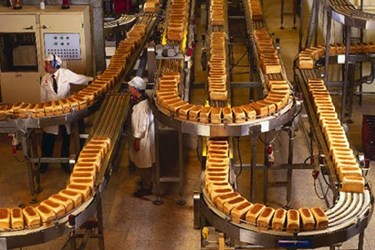2015: A Food Manufacturing Renaissance?
By Isaac Fletcher, contributing writer, Food Online

Despite a sluggish economy in recent years, the manufacturing industry has a positive outlook for 2015 thanks to improving economic conditions, technological advancements, availability of new technology, and overall increases in net revenues
In recent years, the American food-manufacturing industry has suffered as a result of severe economic downturns. Poor economic conditions forced many companies to outsource overseas to take advantage of abundant cheap labor. However, with the economy improving, many manufacturers are bringing outsourced labor back to the U.S. These lower reshoring costs are fostering more local manufacturing activity and technological developments are shaping the way plants operate. Additionally, capital investments are on the rise.
Taking this landscape into consideration, 2015 may turn out to be a pivotal year for American manufacturing thanks to the following predictions:
Continued Reshoring
When it comes to assessing operational decisions, manufacturers generally evaluate seven key areas:
- Transportation And Energy Costs
- Market Demand For Products
- Labor Costs In Developing Nations
- Access To Talent
- Taxes And Regulatory Policies
- Availability Of Capital
- Currency trends
With favorable evaluations of these criteria, jobs will continue to return to America throughout 2015. However, unlike previous reshoring, this reshoring will occur in a more targeted, specific way, primarily thanks to the availability of affordable energy provided by U.S. natural gas sources. Cheaper natural gas means more-efficient factories, as well as new opportunities for products and services.
Additionally, higher transportation costs and increasingly-expensive labor rates, in regions like China, are encouraging manufacturers to move production from overseas back to the U.S. By shortening the supply chain, manufacturers stand to improve their bottom lines.
Manufacturing Boom
Although manufacturing growth in the U.S. has been minimal in recent years, 2015 is poised to reign in a new wave of domestic manufacturing. An evaluation of the national Purchasing Managers Index, which stood at 58.7 in November 2014, provides evidence that a growth in domestic manufacturing between four and five percent can be reasonably expected during 2015. Despite growth in domestic manufacturing, employment levels will not improve at the same rate due to facilities and operations becoming more productive and efficient.
Big Data And Efficiency
It comes as no surprise that software has allowed food manufacturers to achieve improved levels of efficiency. In a Global Service Center CIO Survey: 2014-2015, more than 80 percent of manufacturers believe that big data has had a positive effect on both production and efficiency. Additionally, 65 percent think big data will be critical to business strategy in the future.
One of the key drivers for big data efficiency in 2015 will be the widespread introduction of the Internet of Things (IoT) and the Industrial Internet of Things (IIoT). These technologies are allowing for new methods of connecting disparate types of electronics, equipment, devices, services, and software in ways that have never before been achieved. These new levels of connectivity will deliver unprecedented benefits, open new markets, and change the way people work.
Increased Predictive-Technology Investment
Thanks to the efficiencies allowed by improvements in big data, U.S. manufacturers are likely to increase investments in predictive-maintenance technologies throughout 2015. The availability of more-effective, less-costly sensor technologies, in conjunction with connectivity between factories, will enable manufacturers to implement predictive-maintenance technologies that will reduce downtime and improve bottom lines.
Condition monitoring is gaining new levels of importance and will continue to do so throughout the near future. The ability to eliminate breakdowns and unnecessary maintenance costs will continue to drive the evolution and adoption of predictive-monitoring solutions.
Increased Capital Investment
Taking the aforementioned predictions into consideration, 2015 is postured to be the year in which there will be a resurgence of domestic manufacturing. With improved profits, manufacturers will look to replace aging equipment and invest in new equipment that performs better, is more reliable, and offers new levels of efficiency.
Manufacturing Will Outpace Gross Domestic Product
A December 2014 report issued by the Institute of Supply Management (ISM) states that revenues from manufacturing are expected to increase in 15 different manufacturing industries during 2015. With an expected increase in capital expenditures of 3.7 percent and an expected increase in revenues of 5.6 percent during 2015, manufacturing will be positioned to outdistance GDP for the first time in many years.
